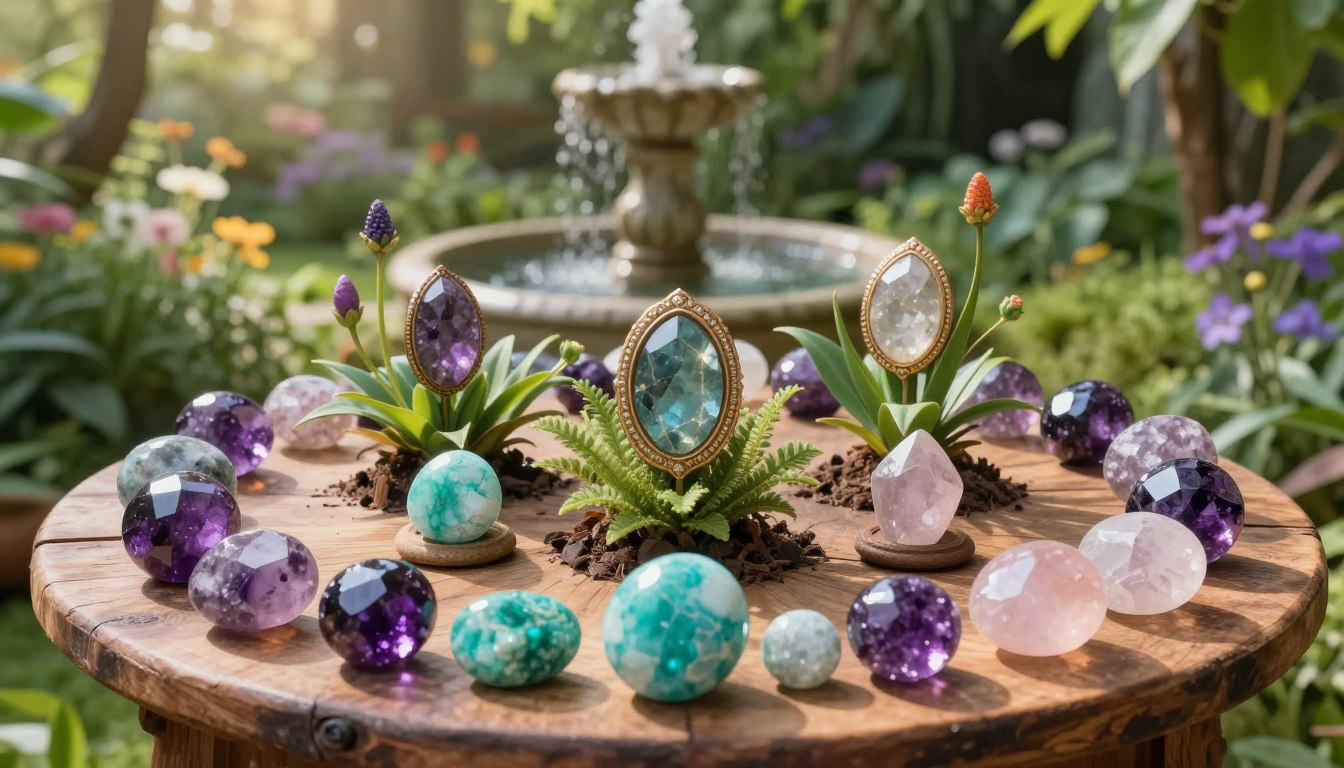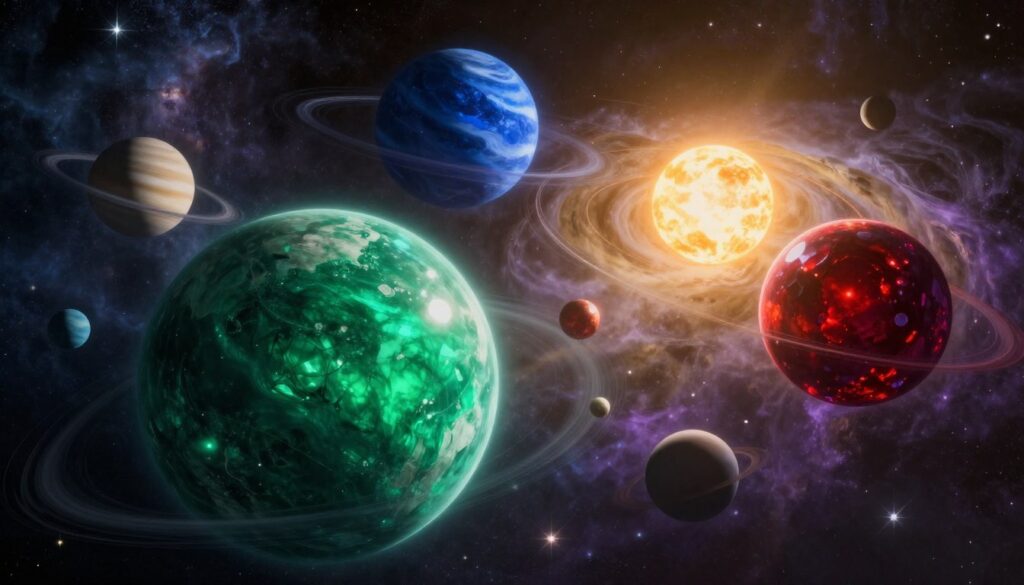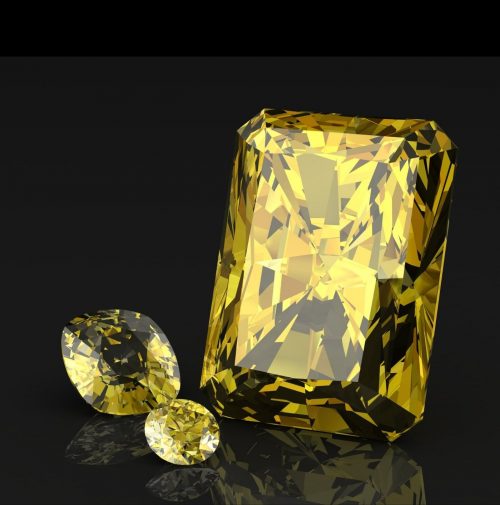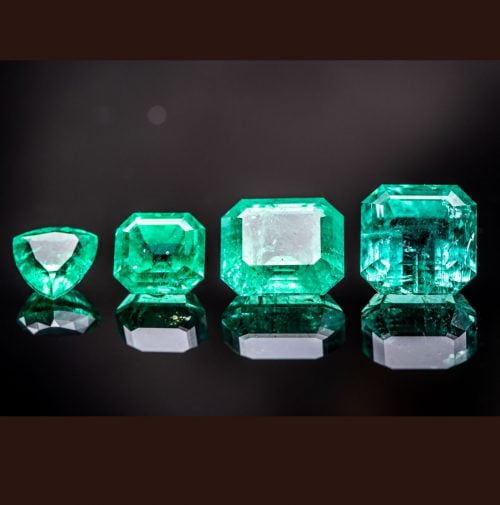Gemstones That Heal vs Gemstones That Harm – Astrological Truth

Gemstones can support your money story when they match the cues in your natal chart. The second house rules personal assets and self-worth, while other houses show shared resources and network gains. Understanding these house signals helps a person choose stones that invite abundance instead of stress.
Planets shape how stones work. Venus and Jupiter boost attraction and expansion, so they often pair well with supportive gems. Saturn and Mars add structure and drive, helping a stone translate intention into action.
Neptune can cause leakage or confusion around money, so pick gems that clarify rather than blur information. We also watch date-sensitive transits and the second house ruler to find moments when a stone complements real effort.
This short guide shows when a gem soothes value issues and when it might amplify money stress. It aims to make gemstone choices practical, ethical, and aligned with your life and signs.
Key Takeaways
- Match gemstones to the second house for personal value and assets.
- Use Venus and Jupiter stones for attraction; use Saturn and Mars stones for follow-through.
- Watch Neptune or confusing transits before adding a money stone.
- Time gems to favorable dates and transits for better results.
- Ground gemstone work in your chart to avoid generic promises about wealth and love.
The present truth about gemstones and money: how Wealth Astrology frames “help” versus “harm”
Gemstones act like dials on an existing money blueprint. They amplify what your chart already shows. A stone that supports a ruler or planet poised to deliver results can help. One that echoes a weak aspect can push people into risky moves.
The second house anchors personal possessions and attitudes. The eighth and eleventh houses point to partner funds and network gains. Astrologers read the second house ruler by sign, house, and aspects to judge whether a gem will sharpen clarity or widen leaks.
Venus and Jupiter favor attraction and growth; Saturn and Mars bring structure and grit. Hard links to Neptune often mean money may slip through your fingers if a stone over-idealizes a plan.
- Use stones to support a strong ruler or calming aspect.
- Hold back when aspects point to overreach or wishful thinking.
- Read your chart first—this gives the clearest information about likely results.
The money blueprint in your chart: 2nd, 8th, and 11th houses decoded
Your natal chart maps where money habits and self-worth live. The 2nd, 8th, and 11th houses each point to a clear earning path. Read them together to see how resources flow in your life.
The 2nd house: personal assets, self-worth, and material security
The second house governs personal possessions and how secure you feel about value. Check planets in the 2nd house and the second house ruler by sign, house, and aspects to see your spending and accumulation patterns.
The 8th house: shared resources and power dynamics
The 8th handles joint money, inheritances, and power plays. It often ties to intimacy, loss, and renewal—so funds can come with strings attached. Read contracts and partnerships carefully when this house is active.
The 11th house: gains from people, networks, and work
The 11th house shows how community turns into income. A strong 11th chart suggests money comes through groups, business ties, or career networks. Follow the second house ruler to trace where real gains land.
- Tip: Use derivative houses (second from a creative or service sector) to spot niche accumulation sources.
Planetary players that make or break wealth outcomes
Planets act like tools in your chart; each one highlights a different route to money and resource handling.

Venus and Jupiter: attraction, expansion, and the feeling of abundance
Venus warms value and love for what you build. When Venus makes good aspects to a money house or its ruler, it helps attract funds and opportunities.
Jupiter expands scope and can bring abundance, but watch hard aspects to Neptune or the second house ruler—these can mean overreach or leakage.
Saturn and Mars: drive, discipline, and durable accumulation
Saturn brings structure. In the second or eighth house it supports patient accumulation and realistic plans.
Mars adds drive; Mars–Saturn contacts often give the stamina needed to reach long-term goals.
Neptune and Pluto: leakage, confusion, fear, and transformation around money
Neptune can create loss through blurred boundaries when it hits money significators. Pluto forces deep change—sometimes necessary, sometimes disruptive.
Mercury and Uranus: deals, data, innovation, and non-linear income
Mercury rules commerce and clear communication. Uranus brings sudden shifts and breakthrough income from unconventional paths or tech.
- Match stones to strengthen helpful planets and contain risky ones.
- Favor Saturn-support for holding gains and Venus stones for relational income.
- Use quick-thinking gems when Mercury or Uranus are active in a house tied to money.
“Read the aspects in the chart first; the planet’s role tells you whether a gem will soothe or amplify.”
| Planet | Primary Money Role | Risk | Gemstone focus |
|---|---|---|---|
| Venus | Attracts value, relational income | Blurred boundaries if weak | Grounding, boundary stones |
| Jupiter | Expands opportunities | Overindulgence with bad aspects | Stones that temper excess |
| Saturn/Mars | Discipline & drive for accumulation | Stagnation if over-tight | Endurance-building stones |
| Neptune/Pluto/Mercury/Uranus | Clarity vs transformation; deals & innovation | Loss, sudden upheaval, confusion | Clarity and stabilizing supports |
When gemstones heal: aligning stones with houses, rulers, and aspects
Stones work best when they back up clear intent in your chart, not when they hype impulses.
Start by reading the second house ruler: its sign and aspects show whether you need clarity, boundaries, or extra discipline. If Neptune forms a hard line to the ruler, choose stabilizing gems that calm spending urges rather than spark risk-taking.
Supporting a strained second house ruler without inflating weak boundaries
Pick stones that improve focus and cash stewardship when the second house is fragile. Favor grounding crystals that help with practical decisions and steady saving.
Activating 11th gains during strong chart patterns and favorable periods
Time outreach to coincide with Jupiter or Venus trines and sextiles to money significators. When the 11th and second house light up, friendly stones can boost networking, making money through audiences feel natural.
Venus- and Moon-friendly stones for relational income and stability
Use Moon- and Venus-leaning gems to enhance rapport in client work and relationships. These stones support trust, comfort, and recurring payments when planets favor relational channels.
“Match stones to supportive aspects and avoid gems that overstimulate a fogged ruler.”
- Read the ruler’s sign before choosing a stone.
- Pair gems with favorable transits (Jupiter/Venus) for outreach and growth.
- Choose stabilizers when Neptune or confusing transits threaten your money rhythm.
When gemstones harm: over-amplification, mismatches, and unintended side effects
When a chart shows stress in a money area, a lively gem can backfire. Adding a high-energy stone to a fragile 2nd or second house setup often magnifies impulses instead of fixing them.
Neptune pitfalls: idealism, overspending, and slippery stewardship
Hard Neptune aspects to the second house ruler or money significators blur judgement. People may spend on dreams, not needs, which raises the chance of loss.
Tip: Avoid stones that increase fantasy or risk-taking. Choose grounding supports instead.
Jupiter excess: entitlement, over-indulgence, and money that won’t stick
Jupiter’s hard aspects can inflate confidence. Stones that amplify expansion may push entitlement or binge purchases.
These results often feel good short-term but fail to produce lasting gains.
Pluto triggers: obsession, scarcity spirals, and power struggles over resources
Pluto in or hitting money houses can create fixation on control. A stone that magnifies that drive may trigger fights with others and hoarding behaviors.
Saturn overload: stagnation, fear-based hoarding, and blocked flow
Saturn-heavy setups call for discipline, not rigidity. Overly constricting gems can freeze movement and stall income streams.
“If you notice impulse buys, secrecy, or rising anxiety, pause and reassess your stones before patterns deepen.”
- Watch for repeated impulsive spending or secrecy as early warning signs.
- Swap stimulating gems for grounding, clarity-focused stones when aspects are hard.
- Prefer moderating supports if planets show mixed signals; match stones to behavior change, not wishful thinking.
| Risk Source | Typical Result | Gem Strategy |
|---|---|---|
| Neptune hard to 2nd | Overspending, loss | Choose grounding, clarity stones |
| Jupiter stressed | Temporary gains that don’t stick | Use tempering, sober gems |
| Pluto emphasis | Control battles, scarcity spiral | Pick stabilizing, relationship-friendly stones |
| Saturn overload | Stalled cash flow | Opt for steady, flexible supports |
Wealth Astrology
To see real money potential, trace the second, eighth, and eleventh houses and note each ruler by sign, house placement, and key aspects. This chart-level view gives a practical map of income sources and accumulation paths.

Chart synthesis: tenants of money houses, rulers by sign/house/aspect
Start with the money houses and list planets inside them. Check the second house ruler’s sign and aspects first; it frames how the native values resources.
Then read the eighth and eleventh. Together they show partnership funds and network gains. Mixed aspects—helpful trines plus challenging squares—often create resilience. Saturn connections usually help hold gains through discipline.
Derivative houses: tracing income from creativity, children, and work
Use derivative houses to follow specific streams. For example, the sixth as the second from the fifth points to monetizing creative work or children-related projects.
Combine planet roles and aspects to make grounded predictions about earnings, timing, and whether accumulation is steady or bursty.
“Synthesize rulers, planets, and aspects into one clear money story before choosing stones or timing moves.”
- Work flow: Money houses → rulers by sign/house/aspect → derivative houses for sources.
- Read mixed configs: Favor resilience (drive + favorable aspects) over soft-only charts.
- Final step: Use this synthesis to align stones and timing with strongest money pathways.
Timing matters: transits and cycles that favor wealth and safe gemstone use
Pick timing before tone: planetary cycles set safer windows for introducing stones and making money choices. Dates when Jupiter or Venus forms conjunctions, trines, or sextiles to money significators are ideal short-term openings.
Jupiter and Venus activations: windows of ease
Use date-based Jupiter and Venus activations to introduce energizing gems. These transits boost confidence and opportunity, so stones that accentuate ease work well then.
Note: John Townley observes a productivity peak when Jupiter transits the first house. Plan outreach or launches during these windows.
Saturn cycles: plan, conserve, consolidate
Saturn trines, sextiles, and conjunctions ask you to save and structure. Pick grounding stones that enhance discipline rather than risk-taking.
Timothy Curley suggests using Saturn/Jupiter supportive aspects to second or eighth rulers to build stability and prepare for tougher squares or oppositions.
Pluto trines/sextiles to 2nd or 8th rulers
Pluto supportive aspects to a ruler signal deep, sustainable shifts. Choose transformation-friendly gems that help with long-term change and resource control.
Repeated 2nd and 11th activation: rebounds and resilience
Strong, repeated activation of the 2nd and 11th houses creates chart-level safety nets. When money comes back through people and platforms, stone use feels more forgiving.
- Introduce energizers during Jupiter/Venus dates; swap to grounders during Saturn seasons.
- Use Pluto-friendly supports for long shifts and discipline stones for consolidation.
- Time outreach and saving so the result follows momentum, not willpower alone.
“Save during supportive trines and prepare for squares; let transit timing shape your stone choices.”
| Transit | Action | Result |
|---|---|---|
| Jupiter/Venus trine or sextile | Introduce energizing stones | Increased opportunities, smoother money flow |
| Saturn cycle | Use grounding gems; consolidate | Greater stability and savings |
| Pluto trine/sextile | Pick transformation-support stones | Deep, lasting shifts in resources |
Strategy by signature: tailoring gemstone choices to your money pattern
Match gemstone strategy to the single, strongest pattern in your chart for clearer, faster results. Read the dominant planet and house before you pick a stone. That way a gem supports the route you use to make money.
Mercury-strong charts: commerce, negotiation, and scalable service models
Mercury linked to the 2nd, 6th, or 10th favors commerce, data, and repeatable work systems. Choose stones that sharpen focus and clarity.
- Work moves: build scalable offers, refine copy, systematize client intake.
- Gem picks: stones that boost communication and mental clarity to help you make money through negotiation and analysis.
Venus or Moon emphasis: real estate, luxury, and trust-based income
When Venus or the Moon supports money houses, earnings flow through people, service, and public-facing roles.
- Work moves: tight client care, polished presentation, relationship selling.
- Gem picks: heart-centered stones that improve rapport and steady repeat income.
Saturn-supported house patterns: slow growth and durable gains
Saturn backing the 2nd or 11th favors long-term planning and property plays. This path builds stable income over time.
- Work moves: save, document plans, lock in contracts and pensions.
- Gem picks: steady stones that reinforce discipline and long-range accumulation.
Uranus in 5th, 9th, or 11th: innovation and sudden jumps
Uranus energizing creative or network houses signals non-linear gains via platforms and global people networks.
- Work moves: test platform bets, scale fast when traction arrives.
- Gem picks: stones that normalize change and support healthy risk-taking so sudden income spikes land with less friction.
Tip: Use 2nd and 11th cues in your chart to time outreach and offerings so making money feels natural, sustainable, and aligned with your sign pathways.
Conclusion
Conclusion
Close with one simple habit: pick a date, check a transit, and match one supportive stone to that window. Track responses for a week to learn what helps your money flow.
Use your birth chart as a compass. Mark the 2nd and 11th house signals, note key planets and aspects, and choose gems that back discipline or ease as needed.
For mixed natives, favor stability and timing over quick fixes. Respect the moon and relationship rhythms, make small adjustments, and let steady choices build real Wealth over time.








Connect me